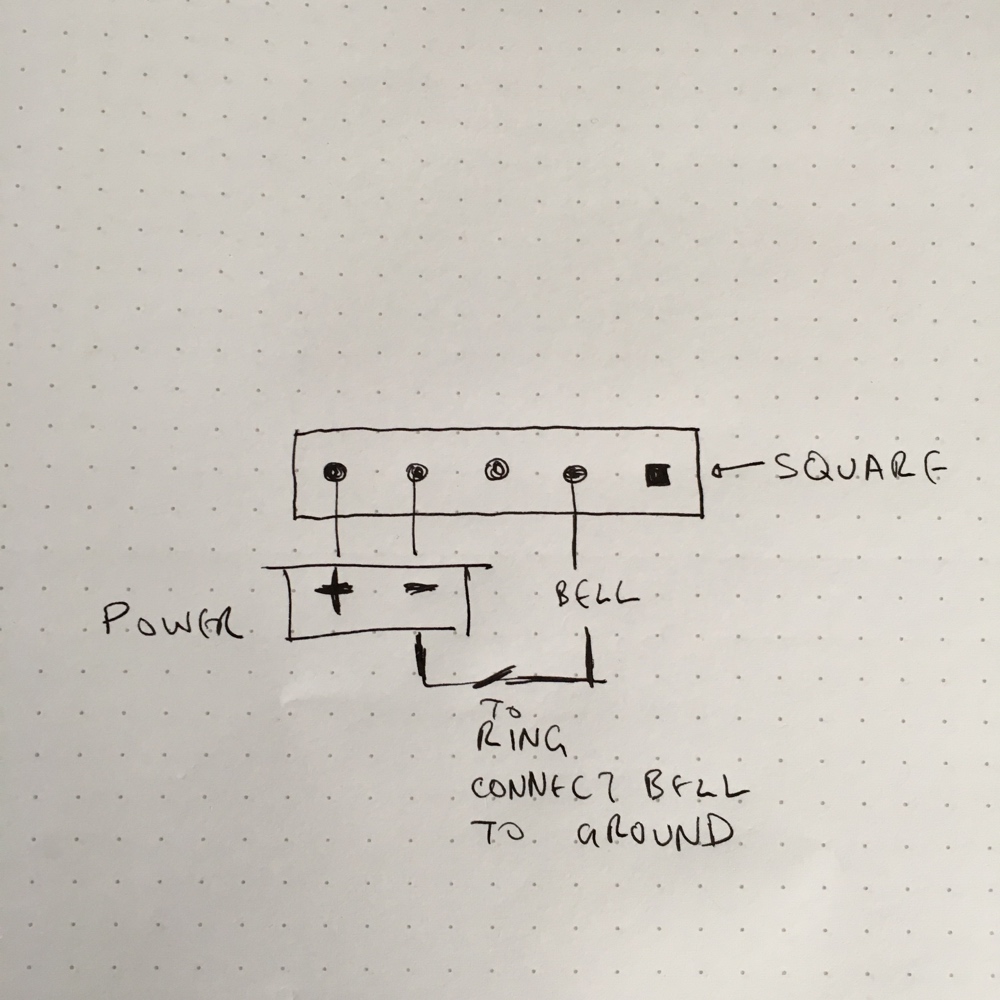We have a Friedland wireless bell. It’s the one of the Libra+ series.
It’s a great bell (D913), but the battery life on the doorbell (D930) is poor. The push button uses a CR2032 coin battery, which provides 3V, but it only lasts for a month. Changing battery every month is far from ideal and we have missed a few deliveries because of this.
Ideally, I would prefer to connect push button to a mains transformer but this is not an option. There is still a box behind our front door that used to contain an old mechanism with batteries. I decided to move the mechanism of the push button indoors, add bigger capacity AA batteries and add a cheap wired button outside.

The D913 push button is easy to dissasemble. At the bottom right corner of the board, a section with 5 pins is exposed. With a bit of help from a voltmeter, I found the following info about the pins.

To ring the bell, all we need to do is to short pins 2 and 4.
I added the header and moved the board in the modified old enclosure.

The only real cost is the new £2 wired push bell.

I hope these batteries give us at least a year of power before we have to change them! In terms of MAh, I think I’m in the right ballpark!
The D930 chime allows multiple pushbells to be used and it can respond with different sounds. This means that one could potentially use an additional Libra+ pushbell with an arduino or raspberry pi to alert the user when an event has occured.
Quick note on the differences between the Libra and the Libra+: Libra operates on a different frequency (433MHz) from Libra+ (868MHz) and it uses dip switches to select a channel. Libra+ syncs by setting the chime to “listening mode” and pressing the push button.